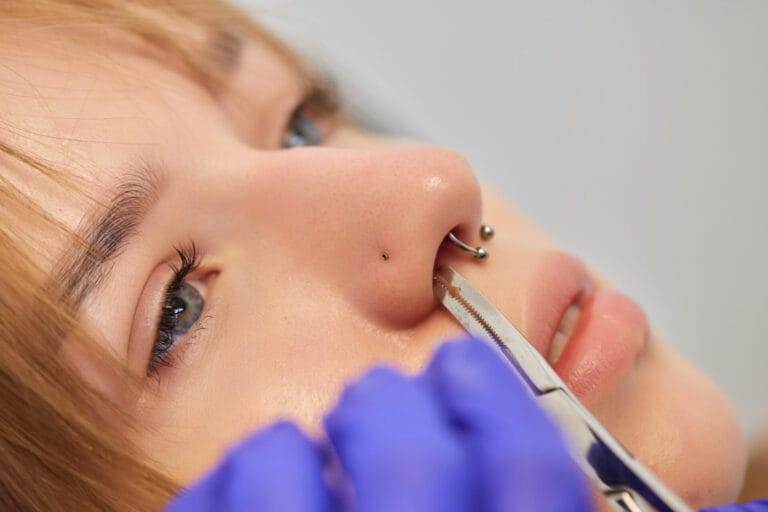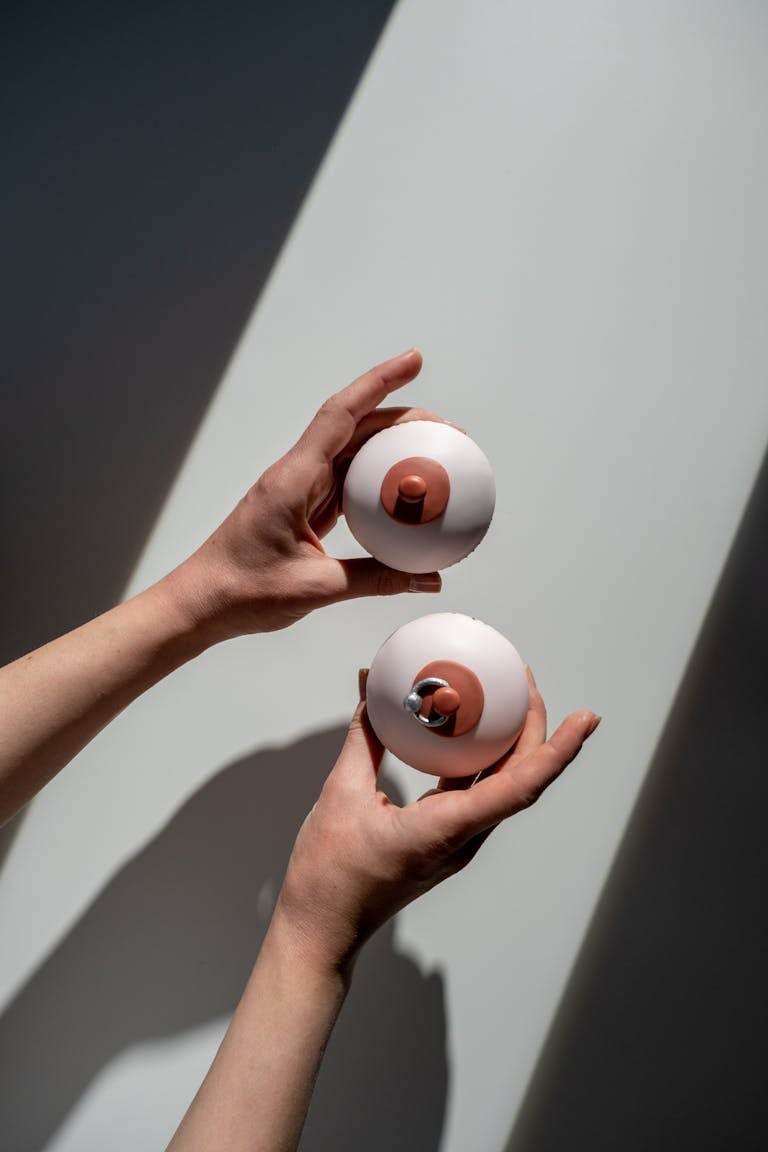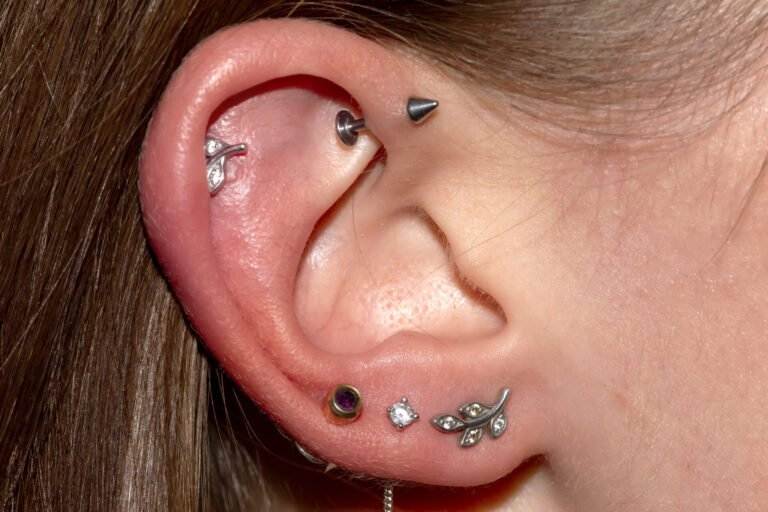History of Ear Piercing
Ear piercing is a practice steeped in centuries of history, tracing back to ancient civilizations. It is believed that the earliest ear piercings date as far back as 2500 B.C. in various regions, including Egypt and India. Over time, this decorative art spread globally, adapting to cultural norms and beliefs. For many, earrings symbolize not only aesthetic appeal but also rites of passage, spirituality, or even status.
Popular Ear Piercing Locations
When it comes to ear piercings, several locations on the ear have become particularly popular:
- Lobes: The classic piercing site, known for its minimal pain and quick healing.
- Cartilage: These piercings, such as helix or tragus, offer a trendy alternative, though they may require more time to heal.
- Conch: A unique and eye-catching choice, located in the inner ear.
With such a rich history and variety of options, ear piercing continues to be a favored form of self-expression today.
Preparation for Ear Piercing
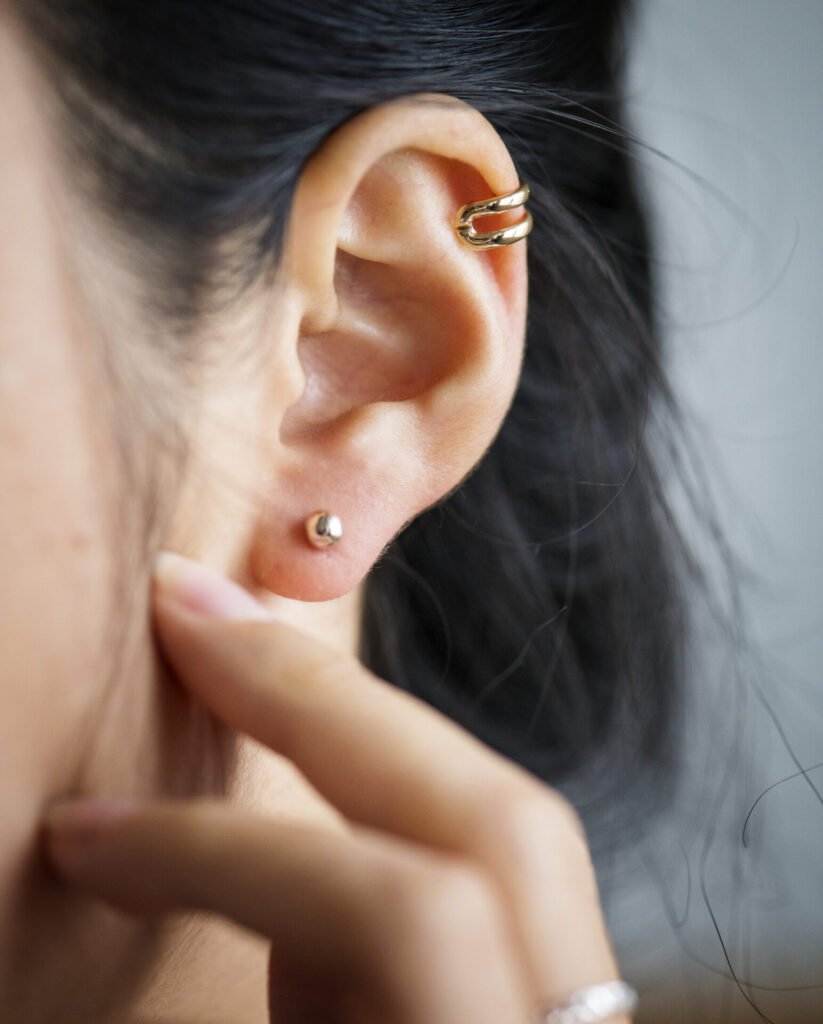
Choosing the Right Earrings
Selecting the right earrings for your new piercings is crucial for both comfort and style. Here are some tips for making the best choice:
- Material Matters: Opt for hypoallergenic metals like surgical stainless steel, titanium, or gold to minimize allergic reactions.
- Size and Weight: Choose lightweight earrings to avoid unnecessary stress on freshly pierced ears.
- Style: Consider your personal style—small studs or delicate hoops can be fashionable and understated.
Potential Risks and Complications
While ear piercing is generally safe, there are some potential risks and complications to keep in mind:
- Infection: Improper care can lead to infections, so always follow aftercare instructions.
- Allergic Reactions: Symptoms include redness, swelling, or itchiness, often needing an allergy-friendly earring.
- Keloids: Some individuals may develop raised scars at the piercing site.
Being well-prepared can prevent most issues and help you enjoy your new look!
Selecting a Piercing Studio

Factors to Consider
Choosing the right piercing studio is essential for a safe and comfortable experience. Here are some factors to consider:
- Reputation: Look for studios with positive reviews and recommendations from friends or family. Online platforms can provide insight into other customers’ experiences.
- Cleanliness: A sterile environment is crucial. The studio should use sanitized equipment and have a clean working space to minimize infection risks.
- Experience: Ensure that the piercer has proper qualifications and significant experience in ear piercings.
Questions to Ask Before Piercing
When visiting potential studios, it’s important to ask specific questions, such as:
- “What types of earrings do you use for initial piercings?”
- “How do you ensure sterilization and safety?”
- “What aftercare steps do you recommend?”
Asking these questions can help you feel confident in your choice, ensuring a positive piercing journey!
The Piercing Process
Sterilization and Safety Measures
When it comes to the piercing process, sterilization and safety measures should be at the forefront of every good studio’s practices. A professional piercer should:
- Utilize Proper Equipment: Ensure that needles are single-use and sterilized, while all tools are cleaned and sanitized for each client.
- Wear Gloves: The piercer should always wear gloves to maintain hygiene throughout the procedure.
- Have a Clean Workstation: A tidy space reflects the studio’s commitment to safety; watch for disinfected surfaces and organized materials.
Pain Levels and Aftercare Instructions
Many prospective piercees often wonder about pain levels. Generally, the discomfort is minimal and described as a quick pinch. After receiving a piercing, it’s essential to follow these aftercare instructions:
- Keep it clean: Use saline solution or a gentle cleanser to prevent infection.
- Avoid irritation: Stay clear of swimming pools and avoid touching your new piercing unnecessarily.
By adhering to safety protocols and aftercare guidelines, you can enjoy your new look while safeguarding your health!
Healing and Aftercare
Timeline for Healing
After your ear piercing, understanding the healing timeline can help manage expectations. Here’s a general guide:
- Lobe Piercings: Typically heal in about 6 to 8 weeks.
- Cartilage Piercings: These take longer, usually ranging from 4 to 12 months.
Understanding that each person heals at their own pace will help you remain patient during this process.
Dos and Don’ts for Proper Aftercare
To ensure a smooth healing process, follow these dos and don’ts:
Dos:
- Clean Regularly: Use saline solution or witch hazel to keep the area clean.
- Leave Jewelry In: Avoid removing your earrings, as this can lead to closing.
Don’ts:
- Don’t Touch: Avoid touching your new piercings with dirty hands.
- Don’t Use Harsh Products: Stay away from alcohol or antibacterial ointments that could irritate.
By adhering to these guidelines, your piercing journey will be more enjoyable and worry-free!
Changing Earrings for the First Time
When to Change Earrings
The excitement of changing earrings for the first time is palpable! However, timing is crucial. Here’s an easy guide to know when to swap your studs:
- Lobe Piercings: Wait at least 6 to 8 weeks to allow sufficient healing.
- Cartilage Piercings: These require more patience; consider waiting 3 to 6 months.
If you’re unsure, a quick check for tenderness or redness can help lead your decision.
Recommended Earring Materials
When making the switch, choosing the right materials is essential to avoid irritation. Here are some recommended options:
- Surgical Stainless Steel: Durable and hypoallergenic, making it suitable for many.
- Titanium: Lightweight and corrosion-resistant, ideal for sensitive skin.
- Gold: Opt for solid gold or at least 14k to minimize reactions.
By keeping these tips in mind, you’ll not only look fabulous but also ensure your ears remain comfortable and irritation-free!
Common Myths and Misconceptions
Myth: Piercing Guns are Safe
A prevalent myth is that piercing guns are the safest option for ear piercings. In reality, many professionals advise against them for various reasons:
- Increased Trauma: Piercing guns use a spring-loaded mechanism that can cause more trauma to the tissue, potentially leading to complications.
- Lack of Sterilization Control: Unlike needles, piercing guns can be difficult to sterilize thoroughly, which increases the risk of infection.
Many piercing enthusiasts advocate for needle piercings, which are generally cleaner and cause less damage to the ear structure.
Misconception: All Earrings are Hypoallergenic
Another common misconception is that all earrings labeled “hypoallergenic” are safe for sensitive ears. However, this isn’t always the case:
- Quality Matters: Some inexpensive earrings may still contain nickel or other irritants, causing allergic reactions.
- Personal Sensitivity: Each individual’s sensitivity can vary, so what works for one person might not for another.
Always check the materials used and choose wisely for the best results!
Ear Piercing for Children

Age Recommendations
Deciding to pierce a child’s ears is a significant decision, often influenced by cultural or familial traditions. Age recommendations typically suggest that:
- Ages 6 to 12: Many professionals recommend waiting until children are at least 6 years old, as they are usually more capable of caring for their piercings responsibly.
- Consulting with Pediatricians: Before proceeding, parents should consider discussing with a pediatrician to ensure the child is ready both physically and emotionally.
Every child is different, so assess your child’s maturity level and readiness.
Parental Consent and Involvement
Parental consent is essential in the ear-piercing journey. Here’s how parents can be involved:
- Choosing the Right Studio: Research reputable studios together and discuss what to expect.
- Supporting the Child: Be there for emotional support during and after the process, helping them feel more at ease.
By taking these steps, parents ensure a positive experience that can introduce the child to the joys of self-expression!
Earlobe vs. Cartilage Piercings
Differences in Healing Time
When considering ear piercings, earlobes and cartilage piercings differ significantly in healing times. Generally, earlobe piercings heal much quicker, typically within:
- 6 to 8 weeks: This rapid healing allows for an easier transition when changing earrings for the first time.
On the other hand, cartilage piercings take considerably longer due to the density of the cartilage itself. Healing can range from:
- 4 to 12 months: It’s essential to be patient during this time, as rushing the process can lead to complications.
Unique Aftercare Instructions
Given their diverse healing processes, aftercare instructions also vary significantly between the two: Earlobe Care:
- Clean with saline solution twice daily.
- Avoid sleeping on the side of the piercing.
Cartilage Care:
- Use saline or non-alcoholic cleaning solutions, ensuring extra gentleness.
- Avoid tight-fitting headphones or hats that could irritate the area.
By following these targeted aftercare steps, individuals can support optimal healing for their chosen piercing style!
Potential Complications and Remedies
Infections and How to Treat Them
Despite best efforts, infections can occur in newly pierced ears. Recognizing the signs early is crucial. Common symptoms include:
- Redness and swelling: This can indicate an infection in progress.
- Pus or a foul odor: Unpleasant signs require immediate attention.
To treat an infection, follow these steps:
- Keep It Clean: Gently wash the area with saline solution or mild soap.
- Consult a Professional: If the infection persists, seek help from a healthcare provider who may prescribe antibiotics.
Allergic Reactions and Solutions
Allergic reactions can also arise, mainly from materials in earrings. Symptoms might include:
- Itching or rash: Redness around the piercing can indicate sensitivity.
To alleviate allergic reactions:
- Switch to Hypoallergenic Materials: Opt for surgical stainless steel, titanium, or gold.
- Limit Exposure: Remove earrings until the reaction subsides and consult a professional if needed.
Taking timely action can make a noticeable difference in your healing journey!
Ear Piercing Trend Forecast
Popular Ear Piercing Styles
The world of ear piercings is dynamic and exciting, with styles continuously evolving. Some popular ear piercing styles currently dominating the scene include:
- Multiple Lobe Piercings: Layering earrings in one or both lobes creates a chic, personalized look.
- Helix Piercings: These piercings along the outer edge of the cartilage offer both a bold statement and versatility when styling.
- Floating or Threaded Earrings: This innovative design gives the illusion of earrings ‘floating’ in the ear, adding a unique touch.
Emerging Earring Trends
As fashion continues to morph, new earring trends are emerging. Some noteworthy trends to watch include:
- Minimalist Designs: Sleek, simple shapes that emphasize elegance without being overwhelming.
- Sustainable Materials: A rise in eco-friendly earrings made from recycled or ethically sourced materials.
- Mixing Metals: Combining different metal tones for a fun, eclectic appearance.
With these trends on the rise, there’s never been a more exciting time to express personal style through ear piercings and earrings!
XII. Personal Stories and Experiences
Testimonials from Piercing Enthusiasts
Hearing from those who have experienced ear piercing can be inspiring and informative. Many enthusiasts share that their piercings hold deep personal significance. For instance:
- Emily, 23: “Getting my cartilage pierced was a rite of passage for me. It felt empowering, marking my transition into adulthood!”
- Jordan, 30: “I love how my multiple lobe piercings allow me to express my personality. Each earring tells a story.”
These testimonials highlight the emotional connection individuals often develop with their piercings.
Unique Piercing Journeys
Everyone’s journey with ear piercings is unique. For example:
- Sophia’s Cultural Significance: “In my culture, ear piercings are a tradition passed through generations. It was an honor to have my ears pierced by my grandmother.”
- Alex’s Healing Adventure: “After having an infected lobe piercing, I learned so much about aftercare. It transformed my perspective on each new piercing!”
These diverse experiences emphasize the individuality of each piercing journey, proving that ear piercings can be so much more than just a fashion statement.
Ear Piercing FAQs


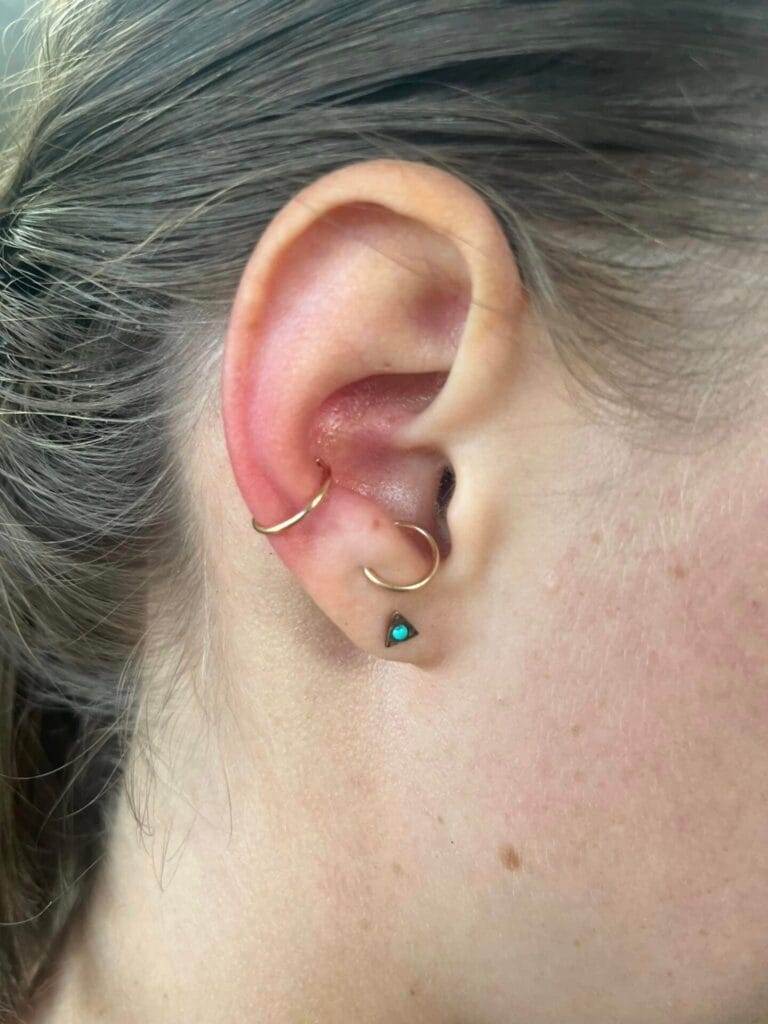
Can I Swim with New Piercings?
This is a common concern among fresh piercees. Generally, it’s best to avoid swimming for at least 4 to 6 weeks after getting your ears pierced. Here’s why:
- Infection Risk: Swimming pools, lakes, and oceans can introduce harmful bacteria, increasing the chance of infection.
- Irritation: Wearing earplugs or earbuds can irritate fresh piercings, complicating healing.
If swimming is unavoidable, consider using waterproof ear coverings!
How Long Should I Wait Before Changing Earrings?
Knowing when to change earrings is vital for maintaining both comfort and health. Here’s a quick guide:
- Earlobe Piercings: Ideally, wait about 6 to 8 weeks.
- Cartilage Piercings: These should be left for 4 to 12 months to ensure proper healing.
Listening to your body is key; if you notice tenderness or redness, it might be wise to wait a little longer before making the change. Always prioritize your ears’ well-being!
Conclusion
Embarking on the journey of ear piercing is an exciting endeavor! From choosing the right studio to understanding aftercare, every aspect plays a critical role in your experience. It’s essential to stay informed about the healing process, potential complications, and current trends to ensure a smooth journey. Remember, each pair of earrings tells a unique story, so choose ones that resonate with you.

